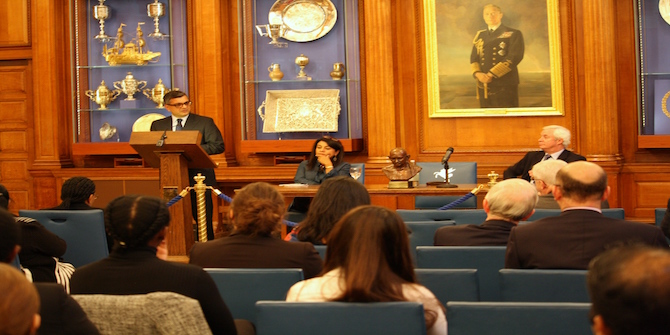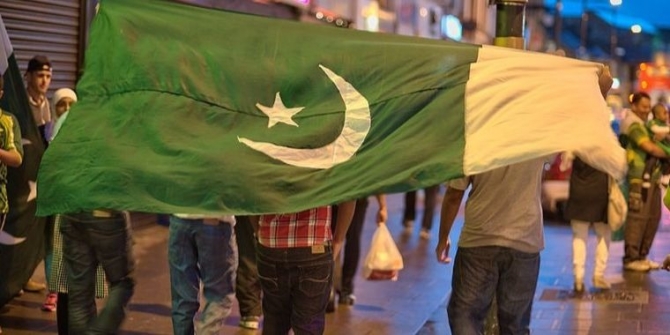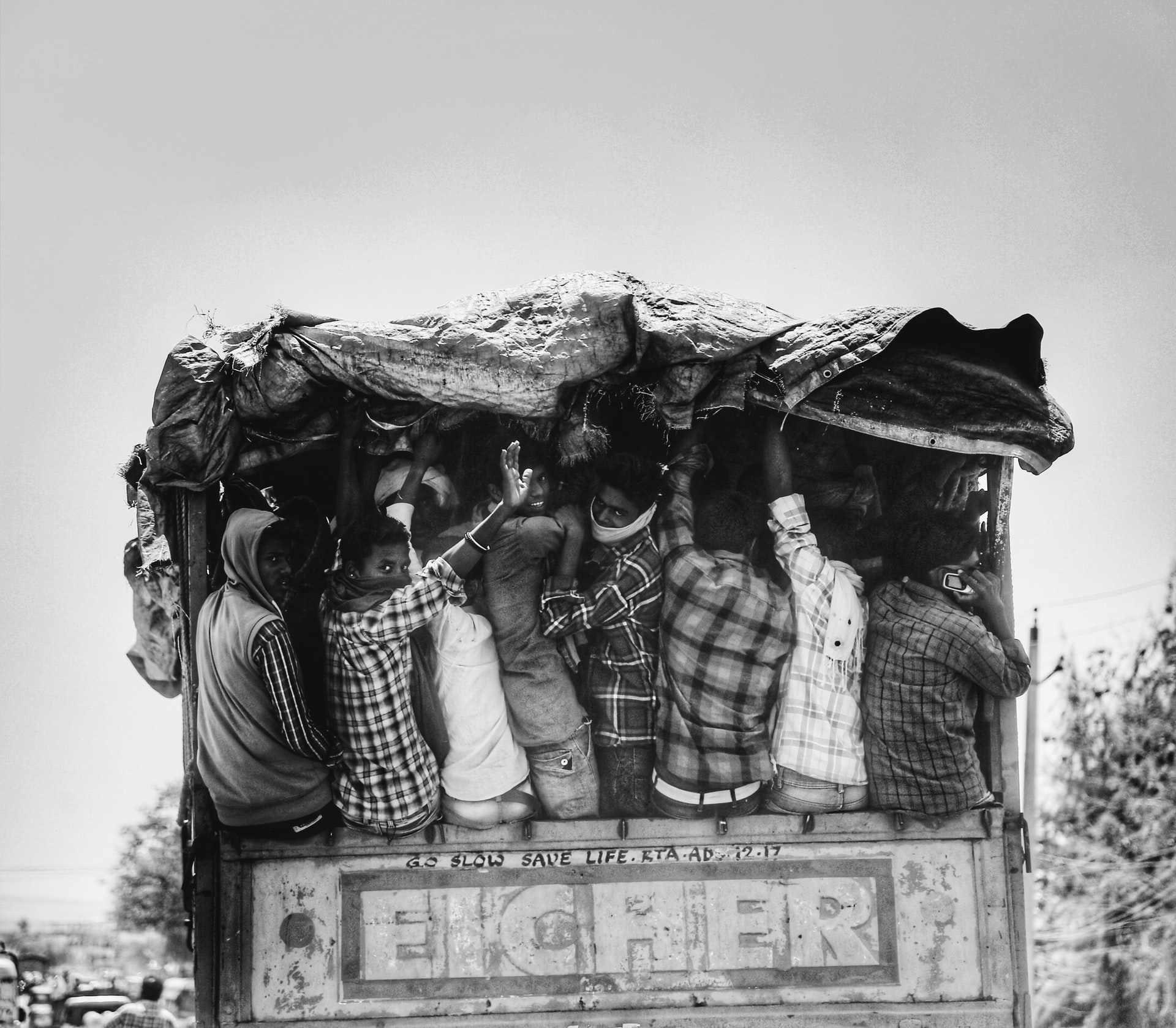 With more than a quarter of the population living below the international poverty line, even after twenty-five years of economic reforms, it is imperative that inequality becomes omnipresent in economic-political discourse and policy in India, writes Anmol Agarwal.
With more than a quarter of the population living below the international poverty line, even after twenty-five years of economic reforms, it is imperative that inequality becomes omnipresent in economic-political discourse and policy in India, writes Anmol Agarwal.
“The question is simple, the answer is not” wrote development economist Branko Milanovic discussing economic inequality in India. The answers are not only complex but also at times, overlooked whilst the importance of the question is underestimated. Higher economic growth as the ultimate goal of policy making attracts most of the limelight. Debates and discussions on primetime news programmes revolve around growth figures with few highlighting the futility of these when the ‘trickle-down’ effect doesn’t reach the poorest strata of the population. With more than a quarter of the population living below the international poverty line, even after a quarter-century of economic reforms, it is imperative that inequality becomes omnipresent in any economic-political discourse in India.
Thomas Piketty and Lucas Chancel opened the doors for discussion last year through their controversial paper, ‘Indian income inequality, 1922-2015: From British Raj to Billionaire Raj?’ The renowned economists made astonishing claims regarding the growth of economic inequality in the Indian society, especially in the post 1991 liberalization period. Their results suggested a steady rise in the share of national income earned by top 1% and 10% of earners received flak from all corners. However, academics questioned the findings due to the study’s statistical irregularities. Nonetheless, the paper generated enough interest and propelled further research on the issue.
Whilst the magnitude of inequality may seem dubious, its increasing trend is a concrete reality as highlighted in recent reports on inequality by Oxfam India and Credit Suisse. The 2018 Oxfam study reports an increase in the consumption Gini index in both rural and urban areas from 1993-94 to 2011-12. The wealth of Indian billionaires on the Forbes list grew by almost 10 times over a decade and they now account for 15% of India’s GDP. The Global Wealth reports (GWR) notes an uptick in the Gini coefficient of wealth from 0.80 in 2011-12 to 0.83 in 2017-18, making India the second most unequal society, next only to the USA. An even more concerning finding is a declining share in the national wealth of the bottom 50% of earners accompanied by a rise in the share of the top decile of earners. The pie of economic benefits maybe expanding but the poor are getting more and more excluded from it.
Despite an alienation of the impoverished from the growth ladder, growth pundits often take great pride in describing India as the fastest growing major economy, almost oblivious to the purpose of growth itself. Some allude to the ‘Kuznets curve’, a popular economics argument stating that market forces in a growing industrializing economy first raise the level of inequality in a country before gradually pulling it down. But, the experience of some East Asian economies and OECD countries, where rapid growth coincided with declining inequality, undermined the curve. This was possible due to strong government interventions in social services especially education, strengthening the argument that politics precedes economics, contrary to the Kuznets curve which limits the role of government. Henceforth, a nation’s inequality path can depend on the quality of interventions made by its political institutions and the income redistribution policies it pursues.

A girl begging in traffic in Mumbai. Photo credit: Varun Chaterji, Wikimedia Commons, CC BY-SA 3.0.
In India, these interventions and policies are lacklustre at best. The expenditure on education at less than 3% of GDP falls woefully short of the present government’s targeted 6% mark. Education being on the concurrent list, the onus for expenditure falls both on state and centre. However, but state governments have been spending proportionally higher and there is considerable variation across states in this regard. This has contributed greatly to disparate educational achievements across states. The obvious way to reduce inequality, progressive direct taxation, succumbs to its own ineffective implementation. Direct taxes contribute only to about a third of the total tax revenues and the total tax base remains fairly narrow. Tax to GDP ratio at around 18% is low as compared to other large economies. Such is the plight that the Finance Minister, Arun Jaitley himself described India as a largely tax non-compliant society and tax evasion as its way of life in the 2017-18 budget speech.
Critics of an egalitarian society tend to view income and wealth inequality as separate issues. Income inequality is certainly lower than wealth inequality but wealth also produces income. A growing wealth inequality can perpetuate income inequality. Consider a child born to a millionaire who inherits his family’s wealth and produces a large income. On the contrary, someone born in a poorer household and with no large inheritance will most likely produce a smaller income even with an equivalent skill set. This is barely the tip of the iceberg. In the absence of strong policy interventions in the social sector, wealth can create a mismatch in skills. A wealthier individual can afford better education and health services and gain skills far superior to his/her poorer counterpart. Low wealth perpetuates low skills translating into a lower income. The poor are caught in this vicious cycle and with no escape in sight, many choose to migrate.
Inequality of opportunity in education, health and employment are the major forces driving income inequality in India. Those at the receiving end are willingly undertaking the massive costs of migration and moving to areas offering better economic potential. The fact is reiterated in the Economic Survey 2016-17 which estimates the annual average inter-state migration in the past five years at 9 million, most of whom travelled from backward states and districts. But only a few succeed in breaking the cycle and the rest are left to the mercy of employers in the informal sector, with minimal wages and hostile work conditions. While employment guarantee programmes like Mahatma Gandhi National Rural Employment Guarantee Act (MNREGA) are crucial for protecting the poor, they need to be supported with concentrated skill-development programmes, which are currently lacking. Better education and nutrition is necessary but not sufficient. These programmes should focus on nurturing skills valuable for quality employment. Skill development of the poor can be the most important weapon in the fight against inequality.
Curbing inequality finds a place in the Sustainable Development Goals (SDG) set for 2030. But charting out a path to attain this goal is not going to be easy and efforts need to be made immediately. Discussions on inequality can often be arbitrary as measuring it is a complex and arduous task that requires comprehensive surveys like those by National Sample Survey Office (NSSO). These are often marred by the underrepresentation of the rich and can bias the inequality estimates downward. It is important for the government to develop a robust indicator for measuring and comparing inequality. Only then can a specific policy target for its reduction be enforced.
The central government should understand the pivotal role of education in creating an egalitarian society and take more responsibility in improving the dismal state of education in the backward regions. Relaxing some of the rigid legislations regarding state versus centre subjects in areas fundamental to development like education and healthcare is the need of the hour. Instead of the usual blame game, all levels of governments need to collaborate and find long term solutions for effective deployment of social service expenditure. As long as towering skyscrapers stand next to slums, sheltering the people who construct them, a nation cannot be termed developed. It is high time that discourse on inequality comes out of the shadow of growth and poverty.
This article gives the views of the authors, and not the position of the South Asia @ LSE blog, nor of the London School of Economics. Please read our comments policy before posting.
About the Author
 Anmol Agarwal completed his MSc in Economics at the London School of Economics and Political Science. He currently works for CAFRAL, Reserve Bank of India. You can read more of his work on his blog.
Anmol Agarwal completed his MSc in Economics at the London School of Economics and Political Science. He currently works for CAFRAL, Reserve Bank of India. You can read more of his work on his blog.








1 Comments